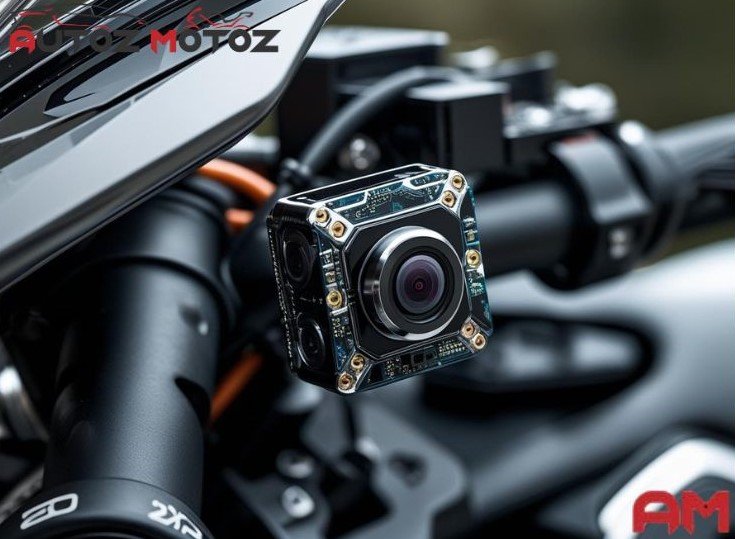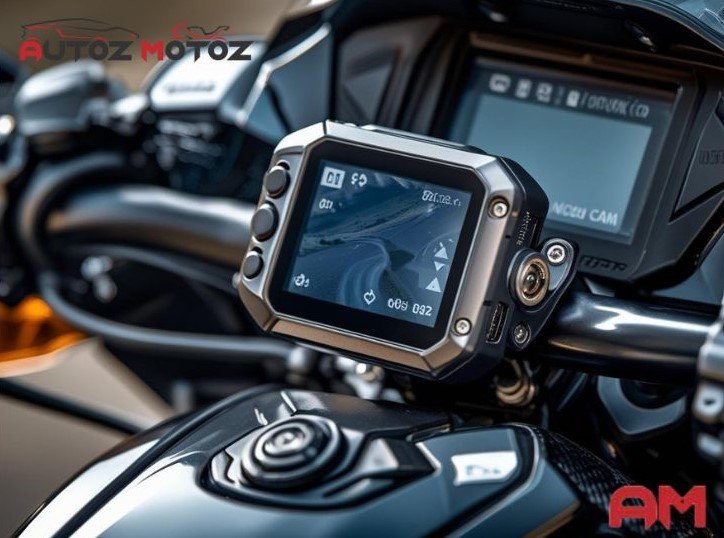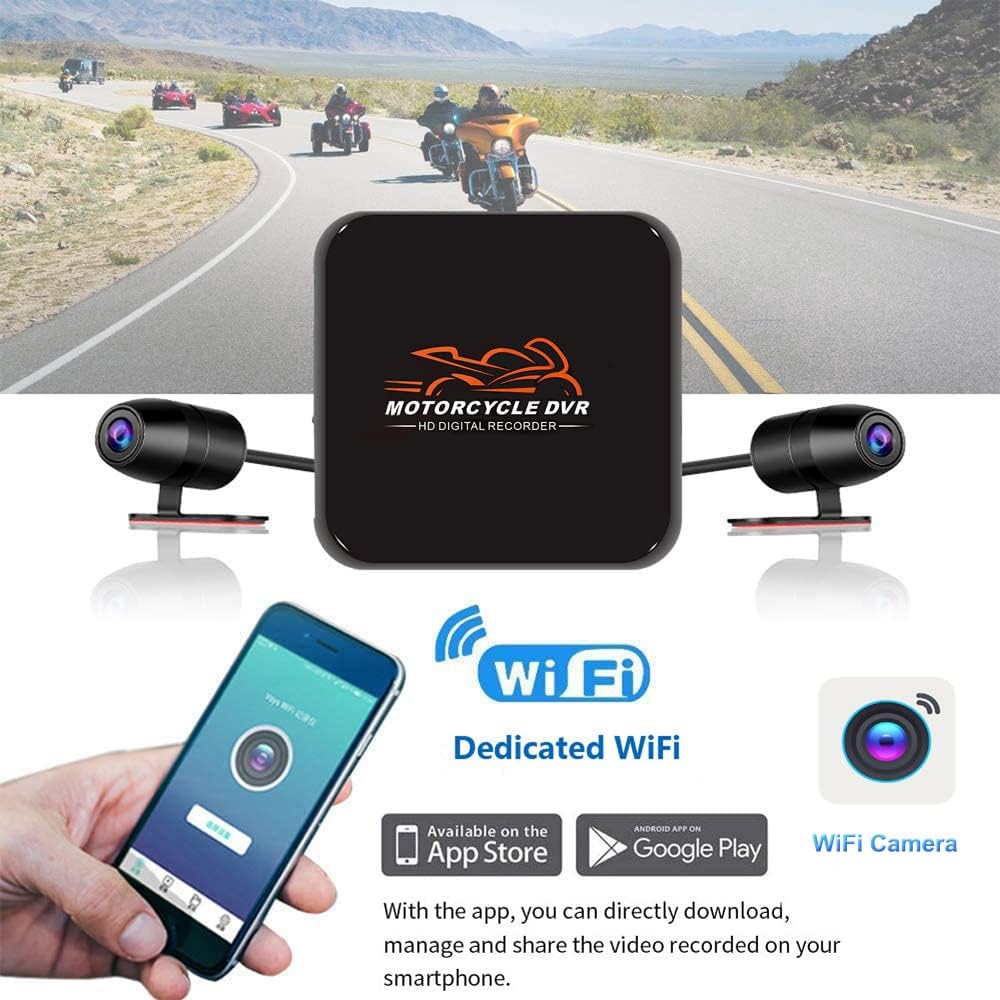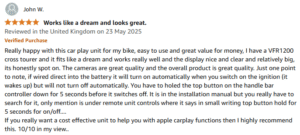This guide explores everything you need to know about motorcycle dash cams—from historical context and modern trends to in-depth performance analysis and expert buying tips. We’ll also highlight some of the top-performing models and answer frequently asked questions to help you make an informed, confident purchase.
In a world where technology and mobility intersect more than ever, the need for smarter, safer riding solutions has become undeniable. Among the most practical innovations for motorcycle enthusiasts and daily commuters alike is the motorcycle dash cam—a compact yet powerful tool designed to record your journey, safeguard your ride, and even tell your story. Whether you’re navigating the urban jungle or exploring scenic highways, a dash cam ensures that every moment is documented, every incident is accounted for, and every experience is preserved.
But with the market now flooded with options, choosing the best motorcycle dash cam can be overwhelming. What features should you prioritize—4K resolution, GPS tracking, waterproof build, dual-channel recording, or mobile app control? Which brands are trustworthy? How do you balance performance with price?
Discover the content
Why You Should Have A Motorcycle Dash Cam
From a legal standpoint, some regions like the UK and certain states within the US are beginning to accept dash cam recordings as legitimate evidence. In addition, there might be riders who receive discounts from their insurance company just because they installed a dash cam. With the constant increase of urban traffic and erratic road behaviors, riders need to proactively shield themselves by recording their rides.
In terms of technology, dash cams have advanced significantly: transforming from simple VGA resolution to offering ultra-wide 4K video with GPS integration and G-sensor features.
Regardless of how far technology has advanced, motorcycle dash cams are now necessity items. They offer protection as an unbiased witness during accidents, thefts, or even charge disputes. When compared to car drivers, motorcyclists face a greater danger on the road. In case of a crash, capturing evidence can be crucial for the insurance claims process or in legal battles.
Furthermore, motorcyclists can review footage captured by dash cams and improve on their skills which promotes safer riding. This is especially important for long distance riders or those who vlog about motorcycles since it helps in capturing significant travel moments.
A Brief History of Motorcycle Dash Cams
Patrol vehicle dash cameras can be traced to the early to mid 1980s when police started installing bulk video recording technology into their vehicles. It was only after the affordable digital video technology boom of the mid 2000s that consumer-level dash cams began popping up. Like Russia and China, countries with heavy urban congestion and a high rate of traffic accidents led in the adoption of dash cams before they became a global phenomenon.
With motorcycles, the two-way challenge of limited space to mount tech as well as exposure to the elements required a multi-tiered solution, not to mention the need for vibration-resistant tech. The available options for early adopters included action cameras and GoPros that had to be retrofitted on helmets or handlebars which greatly limited their functionality.
“Technological advancement goes hand in hand with demand. Now equipped with advanced night vision, angle coverage, and cloud backup, motorcycle dash cams have modern features like 4K resolution sparing no detail to capture the ride.”

"Side view supported"
The real shift happened in the 2010s when motorcycle specific dash cams were brought to life by brands like INNOVV, Thinkware, and Blueskysea. With dual-channel recording, waterproof casings, and hardwiring kits designed for seamless power supply, these devices were a game changer. Along with other functionalities like GPS tracking, mobile remote control, and smartphone access, these devices incorporated emergency lock functions and mobile remote control capabilities.
Trends in Motorcycle Dash Cam Technology
The technology sector shows a major shift toward integrating smart features with mobile devices and cloud storage systems. Motorcycle riders now have the ability to link their dash cams to their phones for immediate video editing and real-time footage sharing. High-end dash cam models feature live streaming together with remote monitoring functions and automated cloud backup systems for enhanced protection.
The industry continues to introduce more frequent implementations of real-time collision detection alongside lane change warning systems and voice-controlled recording functions. The increasing popularity of electric motorcycles has led manufacturers to develop dash cam systems that use minimal power while being compatible with electric vehicles.
Modern motorcycle dash cams have advanced quickly because of new technology and growing rider understanding during recent years. Dual-channel recording systems dominate current trends because they require one front-facing camera alongside a rear-facing camera. The system delivers total coverage to protect essential details from being lost during accidents.
Modern riders prefer motorcycle dash cams with compact designs that hide their presence because they want their bikes to look good. Manufacturers develop compact cameras that maintain the bike’s original design while they fail to be noticeable. The design prevents theft while simultaneously minimizing wind drag effects.
Buying Guide: 3 Step-verification
The camera must be constructed from durable weather-resistant materials which should be your top priority when selecting a dash cam. The installation requirements of dash cameras differ since some models include self-installation kits but others need professional mounting along with hardwiring.
The usability of the dash cam improves through mobile applications which let users watch live footage and perform easy downloads while obtaining firmware updates. Remote control buttons and voice activation systems in dash cams make operating them more convenient.
The decision between an average motorcycle dash cam and an excellent one hinges on multiple essential factors which you need to evaluate before purchasing. First identify your buying reason because you need this information to select the perfect dash cam for your needs. The features you need depend on how you plan to use the product.
Top 7 Dash Cams for Motorcycles – Reviewed and Ranked
In the modern riding world, it is essential to have an advanced motorcycle dash cam. It enhances your safety and records your trips at the same time providing crucial footage in case of accidents or disputes. From documenting your journeys to providing critical evidence during accidents or disputes, the right dash cam offers both protection and peace of mind. This expertly organized list ranks the top 7 motorcycle dash cams based on industry benchmarks, rider feedback, and performance testing. We evaluated each model for 4K/1080P resolution, low-light clarity, durability, loop recording, GPS accuracy, and smart connectivity features like Wi-Fi and mobile app integration. These dash cams are engineered for real-world conditions—waterproof, vibration-resistant, and built for continuous use. Whether you’re a professional rider, long-distance tourer, or daily commuter, this guide helps you invest in a system that delivers professional-grade performance, reliability, and convenience.
1. Digital dash cam for your motorcycle to keep up to date on your footprint.
- Excellent video clarity
- Reliable in all weather
- Discreet and secure mounting
- App-friendly with fast Wi-Fi
See more for exploring;
- No built-in screen
- Setup may require wiring
- Price higher than basic models
See more for exploring;
Disclosure: This post contains affiliate links.
4K Front + 1080P Rear – Ultra-clear dual recording
HDR Night Vision – Sharp low-light capture
IP67 Build – Waterproof, dustproof, durable
160° FOV – Wide, full-road coverage
512GB Support +
Loop – Extended, auto-managed storage
G-Sensor – Auto-lock on impact
GPS + 5GHz Wi-Fi – Speed, route, fast transfer
24H Parking Mode – Motion-triggered standby
★ ★ ★ ★ ★ (73%)
★ ★ ★ ★ ☆ (16%)
★ ★ ★ ☆ ☆ (2%)
★ ★ ☆ ☆ ☆ (6%)
★ ☆ ☆ ☆ ☆ (3%)
referenced by: www.amazon.com
2. You are active like a pro biker, and you don't need any reason to test that one.
- Clear day & night recording
- Stable and weatherproof
- Easy smartphone access
See more for exploring;
Disclosure: This post contains affiliate links.
- 1080P Dual Lens – Front & rear full HD recording
- Starlight Night Vision – Clear video in low light
- Durability – Waterproof and vibration-resistant design
- 140° Wide View – Solid road coverage, reduced blind spots
- Loop Recording + Storage – Auto overwrite, supports up to 256GB
- G-Sensor – Auto saves footage on impact
- Wi-Fi Enabled – Easy file transfer via mobile app
- Parking Monitor – Motion-activated standby mode
★ ★ ★ ★ ★ (60%)
★ ★ ★ ★ ☆ (17%)
★ ★ ★ ☆ ☆ (8%)
★ ★ ☆ ☆ ☆ (5%)
★ ☆ ☆ ☆ ☆ (10%)
referenced by: www.amazon.com
3. Store your riding video which one is the most authentic one.
- Clear video with night support
- Waterproof and rugged design
- Includes microSD card
See more for exploring;
Disclosure: This post contains affiliate links.
- Wide Field of View: Dual wide-angle lenses for better coverage
- Storage & Loop Recording: Includes 32GB card, supports loop overwrite
- High-Resolution Video: Dual 1080P front & rear with 3″ display
- Low Light Performance: Night vision for improved clarity in dark
- Durability: Waterproof and built for tough riding conditions
- G-Sensor: Locks footage during sudden movement or collision
- Wi-Fi & GPS: No
- Motion detection when parked
★ ★ ★ ★ ★ (59%)
★ ★ ★ ★ ☆ (20%)
★ ★ ★ ☆ ☆ (0%)
★ ★ ☆ ☆ ☆ (0%)
★ ☆ ☆ ☆ ☆ (21%)
referenced by: www.amazon.com
4. Super dash cam with a strong clip like alligator.
- Large, waterproof touchscreen
- Dual HD cameras with loop recording
- Seamless CarPlay/Android Auto support
See more for exploring;
- No true night vision
- Lacks built-in GPS logging
- SD card not always included
See more for exploring ;
Disclosure: This post contains affiliate links.
- G-Sensor: Auto-locks files during impact or shock
- High-Resolution Video: 1080P front & rear dash cams
- Low Light Performance: Standard; no advanced night vision
- Durability: 7″ waterproof touchscreen, weather-ready
- Wide Field of View: Dual cameras cover broad road area
- Storage & Loop Recording: Supports loop recording (microSD required)
- GPS & Wi-Fi: Wireless CarPlay & Android Auto; GPS via smartphone
- Parking Monitoring: Not specified; likely limited standby only
★ ★ ★ ★ ★ (68%)
★ ★ ★ ★ ☆ (17%)
★ ★ ★ ☆ ☆ (3%)
★ ★ ☆ ☆ ☆ (2%)
★ ☆ ☆ ☆ ☆ (10%)
5. Remote control with night vision and mostly protected from rainfall.
- Integrated CarPlay & Android Auto
- Dual HD cameras with loop recording
- TPMS & remote control included
See more for exploring;
- No built-in GPS tracking
- Night vision is limited
- May require external power setup
See more for exploring;
Disclosure: This post contains affiliate links.
- Low Light Performance: Basic night support, no HDR
- Durability: Waterproof touchscreen, built for motorcycle use
- Storage & Loop Recording: Supports loop recording (SD card needed)
- G-Sensor: Included for impact-triggered file locking
- GPS & Wi-Fi: Wireless CarPlay/Android Auto; GPS via phone sync
- Parking Monitoring: Limited standby; not full 24H mode
★ ★ ★ ★ ★ (67%)
★ ★ ★ ★ ☆ (13%)
★ ★ ★ ☆ ☆ (0%)
★ ★ ☆ ☆ ☆ (0%)
★ ☆ ☆ ☆ ☆ (0%)
6. EIS anti shake dual channel dash cam with GPS.
- Smooth, stabilized video with EIS
- High-resolution dual-channel recording
- Weatherproof and GPS-ready
See more for exploring;
Disclosure: This post contains affiliate links.
High-Resolution Video: Dual 2K@30FPS or 1080P@60FPS
Low Light Performance: Good clarity with EIS and night support
Durability: Waterproof design, built for harsh conditions
Wide Field of View: Dual lens covers wide angles effectively
Storage & Loop Recording: Supports up to 512GB, loop-enabled
G-Sensor: Locks footage during collisions or motion
Parking Monitoring: 24H protection with G-sensor activation
★ ★ ★ ★ ★ (69%)
★ ★ ★ ★ ☆ (12%)
★ ★ ★ ☆ ☆ (5%)
★ ★ ☆ ☆ ☆ (1%)
★ ☆ ☆ ☆ ☆ (13%)
7. 4K video with GPS tracking more likely a pro kit.
- Sharp 4K front video quality
- Durable and weather-resistant
- Fast wireless file transfer
- Full-featured GPS tracking
See more for exploring;
- SD card not included
- Installation may require professional setup
- Premium price range
See more for exploring;
Disclosure: This post contains affiliate links.
- Parking Monitoring: 24/7 motion-based recording (hardwire required)
- High-Resolution Video: 4K front + 1080P rear for ultra-clear footage
- Low Light Performance: Enhanced night vision with Sony sensor
- Durability: IP67 waterproof, rugged aluminum build
- Wide Field of View: Broad coverage to minimize blind spots
- G-Sensor: Auto-locks important footage on impact
- GPS & Wi-Fi: Built-in GPS + fast 5GHz Wi-Fi for app access
★ ★ ★ ★ ★ (73%)
★ ★ ★ ★ ☆ (16%)
★ ★ ★ ☆ ☆ (2%)
★ ★ ☆ ☆ ☆ (6%)
★ ☆ ☆ ☆ ☆ (3%)
Performance - Top Notch Standard

"Night mode supported"
The standard resolution for motorcycle dash cameras remains 1080p yet 2K and 4K cameras deliver better image quality that helps identification of license plates after accidents.Field of view (FOV) is another critical factor. A wide-angle lens from 140° to 170° will provide extensive coverage that reduces areas without visibility. The wider angle of view in a camera produces fisheye distortion, so users need to find the right balance between wide coverage and image quality.
Nighttime riders need dash cameras with strong low-light performance and night vision features. Opt for dash cameras which include SONY STARVIS sensors or infrared lenses since these components enhance low-light performance.
The performance of a dash cam depends heavily on its power management system and battery capacity. The optimal dash cameras connect to motorcycle batteries through hardwiring kits or feature supercapacitors which maintain better stability than lithium-ion batteries at high temperatures.
G-sensors detect crashes and auto-lock footage; GPS logs speed and location.The camera needs high durability together with IP65 to IP67 waterproof rating to protect itself against rain and dust and vibration during operation.
Analysis - Real Market
“Everything you need to know about motorcycle dash camsAny time you record video while riding a motorcycle there’s a risk you’ll capture incredible footage. And it might just be the most useful video you ever make. Because of good reasons; or not so good ones.
No matter the scenario, motorcycle dash cams have grown in popularity. Whether it’s because of the chance for YouTube fame or the fact that we are an inherently litigious society, we can’t be sure.”
Post Thought - Everythings looks Good!
Motorcycle dash cams exist now as standard equipment because riders increasingly adopt them as their regular accessories. The rising numbers of road accidents, together with insurance scams and theft, make recording devices essential for securing your safety and legal defense. The best dash cams available today merge small size with high-definition video quality and smart connectivity features to provide a user-friendly experience. A dash camera exists for every type of motorcycle user, from beginner riders to professional content creators and long-distance travelers.
Selecting the ideal dash cam requires more than brand preference. You need to know which performance features, along with installation methods and usability factors, will work best for your specific riding style and environment.
Frequently Asked Questions
Dash cams receive legal approval in most worldwide locations yet you need to verify local regulations about recording audio and public video usage.
Various dash cam models include installation kits for self-assembly but permanent power connections need expert assistance for proper installation.
The majority of dash camera models possess sound recording capabilities, yet users can switch off this feature.
A minimum storage capacity of 128GB works best for dual-channel dash cameras that record continuously.
Smartly installed systems with proper hardwire kits generate minimal power consumption thus protecting your motorcycle battery from depletion.
Helmet cameras provide rider perspective footage but their design tends to be heavy. The stability and better recording continuity of dash cameras mounts on handlebars.























